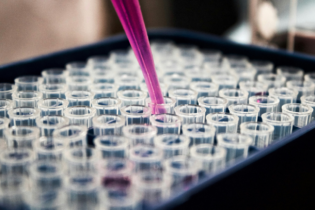The commercial sector has not fully realised the opportunity that exists to reduce their environmental footprint and save money in the long term when it comes to water use.
By Ruan Jansen van Rensburg, Mechanical Engineer at SEM Solutions The sector is currently more likely to buy water from local municipalities and discharge waste water to sewers than look at alternative potable water solutions. Even where municipal service interruptions are frequent. A paradigm shift however, is expected during the next decade. Part of this paradigm shift is the treatment and purification of black water to make it potable. Black water is the term used to describe effluent water discharged from household or commercial buildings that contain raw sewage. It is generated by toilets and urinals, as well as water discharged from other domestic utilities such as bathtubs, showers, sinks and washing machines when discharge is not separated at the source. Grey water is effluent waste water that does not contain the faecal matter found in sewage waste. Industrial effluent can also be treated (and should be tested to ensure that it is not toxic before discharged into municipal sewer). The treatment process may differ however for various procedures, as the quality of industrial effluent is unique to each process. Waste water treatment systems can be installed at most operations that utilise water, especially for commercial and ablutions applications. The required systems can be purpose built for almost any application for residential or commercial properties. The quality of water after the applied treatment process may differ. By implementing a black water -to -potable water treatment system, water requirements of up to 70-95% may be attributed to the use of recycled water, depending on the design and implementation of the system. The anticipated municipal consumption can therefore be reduced significantly – and that system may then mostly be considered to be off grid / self-sufficient. The installation cost may vary depending on the required flow, anticipated retention volume and quality of effluent water. Therefore, every potential project is evaluated and designed according to specific design requirements. Without taking maintenance costs into account, it is calculated that on average the capital investment required can be estimated to be R56.67 per litre of water to be treated, but the overall investment can pay off in the long run (within 10 to 20 years).
The primary components
The primary components of a black water treatment plant are considered to be the inlet screen (screening process), buffer tank (storage), retention tank (primary treatment / anaerobic process), retention tank (secondary treatment / aerobic process / flocculation), clarifier (tertiary treatment / sedimentation /sludge return), filters (filtration), water treatment (disinfection), final storage (accumulation) and distribution (delivery). Primary purificationPrimary treatment consists of the accumulation and storage of raw sewage. The process allows settlement of solids to the bottom and oil and for lighter substances to rise to the top. Natural separation and layering allow for simplified treatment as solids are retained to degrade, allowing the remaining liquid to flow to the secondary treatment process. Sewage sludge is treated in a separate process called sludge digestion or the aerobic treatment process.
Replacing municipal water? If the black water treatment system is designed, implemented and maintained correctly, the treated water can be filtered, purified and dosed further for various applications from irrigation and grey water flushing to potable water. It is imperative however that all the applicable guidelines and local bylaws governing the treatment of water should be considered when implementing a black water treatment system; not only the treatment of water, but also the discharge of effluent and its quality. For the purposes of consumption however, the water is required to be tested on a continuous basis, to conform to SANS 241. The treatment process may become complicated should one not apply the correct methods of dosing and conform to the prescribed dosing schedule. The advancement of technology and automation in treatment plants enables direct control of the system at component level that may introduce significant savings in operating costs, including energy costs, and improved payback times. A driving factor for the automation of water treatment plants to consider is the opportunity to reduce electricity consumption by improved input and feedback from the system. In modern control systems that are applied to water treatment plants the quality of the water may also be monitored in real time, to ensure that the water quality is compliant to the SANS 241 standards. Electricity is required to drive the pumps and processes implemented in the treatment process of sewage (mixing and aeration of wastewater, adding chemicals and for the transportation of sludge). Automated control by means of electronically operated vales, sensors and gauges allows for scheduling to be implemented that manages the running period and scheme of the various electrical components in the system. Automation also offers the opportunity to improve dosing and pH control, increased efficiency of the aeration process and return sludge control. An anticipated 10-30% increase of plant efficiency can be expected by implementing controls, compared to more conventional systems. This will in turn save water and electricity and may drive the payback period significantly. Whilst black water systems are a capital investment that take some time to be recovered (calculations indicate that the cost is usually recovered in 7 to 14 years), in a water scarce country a water treatment system becomes invaluable. There are the very real risks of water becoming too expensive or unobtainable so planning for systems such as these become a proactive business risk management tool. A typical consideration to keep in mind at a national level is that the environment, natural rivers and springs, and the coast have to be retained and protected as a national asset. The introduction of proactive measures, such as a black water to potable water treatment plant and responsibility for waste generation taken at a local level not only fulfils the principles of reducing waste water, but also the reduction of potable water consumption that is supplied by municipalities. About the author: Ruan Jansen van Rensburg obtained broad experience in the design and implementation of mechanical services in the built environment industry and is currently involved in the research, feasibility and implementation of Wet Services systems at SEM Solutions. His experience also lies in water supply and drainage systems design as well as application of greywater, blackwater and rainwater harvesting systems. Ruan holds a bachelor’s degree in mechanical engineering, and completed his degree in Engineering Management of Technology, in 2019.







